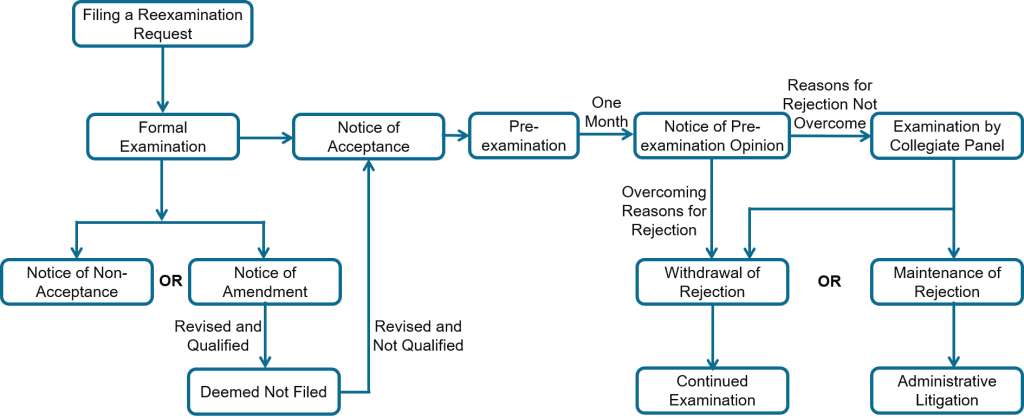Many patent applicants encounter the situation where their patent application is rejected. What should they do? Don’t worry too much; reexamination is still an option.
1. What is Patent Reexamination in China?
The patent reexamination procedure serves as a remedial route for applicants whose patent applications have been rejected. For applicants, it is also an extension of the patent examination process. If dissatisfied with the decision made during the preliminary or substantive examination process, applicants can submit a request for reexamination to the Patent Reexamination Board within three months of receiving the notice.
2. Objects of Patent Reexamination in China
The objects of patent reexamination requests in China are limited to rejection decisions made on patent applications. These include:
2.1 Preliminary Examination Decisions
Decisions made during the preliminary examination of invention, utility model, or design patent applications, where the application is deemed non-compliant with the Patent Law or its Implementing Regulations, and the defects are not rectified even after statements, amendments, or two corrections.
2.2 Substantive Examination Decisions
Decisions made during the substantive examination of invention patent applications, where the application is found non-compliant with the Patent Law or its Implementing Regulations, and the defects are not rectified even after statements or amendments.
2.3 Provisions and Implications
- After a patent application is rejected, applicants can only opt for reexamination as a remedy, and cannot directly file a lawsuit in court or request administrative reconsideration.
- Other specific administrative actions beyond the rejection decision of the patent application cannot be selected for reexamination and must be addressed by filing a lawsuit in court or requesting administrative reconsideration.
3. Reexamination Process

3.1 Filing a Reexamination Request
- Submission Unit: Patent Reexamination and Invalidation Department of the China National Intellectual Property Administration (CNIPA).
- Deadline: Within three months of receiving the rejection notice (excluding force majeure).
- Requester: The applicant of the rejected application.
- Materials: A reexamination request explaining the reasons for disagreeing with the rejection decision, relevant evidence, and amended application documents to address the defects noted in the rejection decision.
- Fee: 1000 yuan.
3.2 Situations Not Accepted for Reexamination
Major defects that do not meet the basic requirements for initiating reexamination, such as:
- The requester not being the applicant of the rejected application.
- Exceeding the three-month statutory period.
- The application not being rejected.
3.3 Correction Situations
Minor issues, such as:
- Not using the designated forms.
- Not submitting the patent agency power of attorney or not specifying the scope of authority.
- Missing signatures or stamps.
3.4 Deemed as Not Submitted
If corrections are not made within the specified period, it is considered as not submitted. The same applies if the same defects persist after two corrections or if the reexamination fee is not fully paid.
3.5 Pre-examination
An internal procedure where the Reexamination and Invalidation Department forwards the case, including the reexamination request and amendments, to the original examination department for review. If the original department agrees to revoke the rejection decision based on the reexamination request and amendments, the Reexamination Department will make a decision to revoke the rejection, and the case will return to the original examination department for further processing.
3.6 Continued Examination After Rejection Reversal
The case returns to the original examination process, which may result in authorization or rejection based on new evidence or reasons.
3.7 Panel Review
If the Reexamination and Invalidation Department finds the reexamination request non-compliant, it issues a reexamination notice, and the requester must respond within one month. If no response is received, the request is deemed withdrawn. If the response is still non-compliant, a decision to uphold the rejection will be made.
3.8 Reexamination Decision
The decision could either uphold the rejection or revoke it, but it does not directly authorize or reject the patent. The reexamination checks the legality and rationality of the original examination actions. The outcome is determined by the original examination department.
3.9 Disagreement with Reexamination Decision
Applicants can file an administrative lawsuit with the Beijing Intellectual Property Court against CNIPA within three months if they disagree with the reexamination decision.
4. Deciding Whether to Apply for Reexamination
4.1 Assessment of Examiner’s Understanding of the Technical Solution and Comparative Documents
If the examiner misunderstood the technical solution or comparative documents leading to the rejection, explaining the correct understanding in the reexamination process can often overturn the decision.
4.2 Evaluation of Technical Features in the Claims
If the examiner fails to cite relevant documents for certain technical features, emphasizing their innovation in the reexamination response can help.
4.3 Identifying Innovative Technical Features in the Description
Adding innovative technical features from the description to the claims during reexamination can strengthen the application.
4.4 Combination Strength of Comparative Documents
If the examiner uses multiple comparative documents, analyzing whether these documents can realistically be combined can challenge the rejection.
5. Reminders and Cautions
5.1 Mandatory Reexamination Before Lawsuit
Applicants must go through reexamination before filing an administrative lawsuit. Other specific administrative actions beyond the rejection cannot be reexamined and should be addressed through administrative reconsideration or lawsuits.
5.2 Reexamination is Optional but Requires Evaluation
Reexamination involves time, effort, and money. It is advisable to assess the probability of success before proceeding.
5.3 Modification of Documents During Reexamination
Amendments should be limited to addressing the defects pointed out in the rejection decision or reexamination notice. Modifications should not exceed the original application’s scope.
6. Examples for Deciding Whether to Apply for Reexamination
6.1 Does the Examiner’s Understanding of the Technical Solution and Comparative Documents Have Bias?
If the examiner’s understanding of the technical solution is biased, it may lead to incorrect conclusions and rejection of the patent application. For example, in one case, the examiner incorrectly compared “graphene-modified copper foil using copper foil as a substrate” with “conductive composite material using polymer substrate” from the comparative document, misunderstanding the core technological differences. By addressing this in the reexamination, the applicant successfully overturned the decision.
6.2 Has the Examiner Found Relevant Documents for All Technical Features in the Claims?
If the examiner claims certain features are “common knowledge” but fails to provide adequate references, it can be challenged. Emphasizing the innovative aspects of these features during reexamination can help refute the examiner’s conclusion.
6.3 Are There Innovative Features in the Description Not Yet Included in the Claims?
Often, key innovative features described in the specification are not included in the claims. Including these features during reexamination can strengthen the case for patentability.
6.4 Are the Comparative Documents Strongly Related?
If the examiner combines multiple comparative documents to argue against the patent’s novelty, analyzing whether these documents are related and can realistically be combined can challenge the rejection. For instance, if the documents address different technical fields or problems, they may not be combinable.
7. Final Reminders
7.1 Mandatory Reexamination Before Lawsuit
After rejection, applicants must first seek reexamination before pursuing administrative litigation. Other administrative actions beyond the rejection decision must be addressed through administrative reconsideration or litigation.
7.2 Evaluating the Need for Reexamination
Reexamination requires time, effort, and financial resources. It is crucial to evaluate the chances of success before proceeding.
7.3 Modifications During Reexamination
Any amendments during reexamination should address the defects noted in the rejection decision and must not extend beyond the original scope of the application.

